A Brain-Inspired Goal-Oriented Robot Navigation System
Abstract
1. Introduction
2. Mathematical Model
2.1. System Structure
2.2. Model Description
2.3. Navigation Strategy
2.4. Network Dynamic Adjustment
3. Results
3.1. Simulation Setup
3.2. Simulation Result
3.3. Contrastive Analysis
4. Conclusions
Author Contributions
Funding
Conflicts of Interest
References
- Geva-Sagiv, M.; Las, L.; Yovel, Y.; Ulanovsky, N. Spatial cognition in bats and rats: From sensory acquisition to multiscale maps and navigation. Nat. Rev. Neurosci. 2015, 16, 94–108. [Google Scholar] [CrossRef] [PubMed]
- O’Keefe, J.; Dostrovsky, J. The hippocampus as a spatial map. Preliminary evidence from unit activity in the freely-moving rat. Brain Res. 1971, 34, 171–175. [Google Scholar] [CrossRef]
- Giocomo, L.M.; Moser, M.B.; Moser, E.I. Computational models of grid cells. Neuron 2011, 71, 589–603. [Google Scholar] [CrossRef]
- Hafting, T.; Fyhn, M.; Molden, S.; Moser, M.B.; Moser, E.I. Microstructure of a spatial map in the entorhinal cortex. Nature 2005, 436, 801–806. [Google Scholar] [CrossRef] [PubMed]
- Stensola, H.; Stensola, T.; Solstad, T.; Frøland, K.; Moser, M.B.; Moser, E.I. The entorhinal grid map is discretized. Nature 2012, 492, 72–78. [Google Scholar] [CrossRef] [PubMed]
- Burak, Y.; Fiete, I.R. Accurate path integration in continuous attractor network models of grid cells. PLoS Comput. Biol. 2009, 5, 16. [Google Scholar] [CrossRef] [PubMed]
- McNaughton, B.L.; Battaglia, F.P.; Jensen, O.; Moser, M.B.; Moser, E.I. Path integration and the neural basis of the ‘cognitive map’. Nat. Rev. Neurosci. 2006, 7, 663–678. [Google Scholar] [CrossRef] [PubMed]
- Ranck, J.B. Head-direction cells in the deep cell layers of dorsal presubiculum in freely moving rats. Soc. Neurosci. Abstr. 1984, 10, 599. [Google Scholar]
- Taube, J.S.; Bassett, J.P. Persistent neural activity in head direction cells. Cereb. Cortex 2003, 13, 1162–1172. [Google Scholar] [CrossRef][Green Version]
- Kropff, E.; Carmichael, J.E.; Moser, M.B.; Moser, E.I. Speed cells in the medial entorhinal cortex. Nature 2015, 523, 419–478. [Google Scholar] [CrossRef]
- Valerio, S.; Taube, J.S. Path integration: How the head direction signal maintains and corrects spatial orientation. Nat. Neurosci. 2012, 15, 1445–1453. [Google Scholar] [CrossRef]
- Allen, T.A.; Fortin, N.J. The evolution of episodic memory. Proc. Natl. Acad. Sci. USA 2013, 110, 10379–10386. [Google Scholar] [CrossRef] [PubMed]
- Liu, D.; Gu, X.; Zhu, J.; Zhang, X.; Han, Z.; Yan, W.; Cheng, Q.; Hao, J.; Fan, H.; Hou, R.; et al. Medial prefrontal activity during delay period contributes to learning of a working memory task. Science 2014, 346, 458–463. [Google Scholar] [CrossRef] [PubMed]
- Silva, M.A.D.; Huston, J.P.; Wang, A.; Petri, D.; Chao, O.Y.H. Evidence for a specific integrative mechanism for episodic memory mediated by AMPA/kainate receptors in a circuit involving medial prefrontal cortex and hippocampal CA3 region. Cereb. Cortex 2016, 26, 3000–3009. [Google Scholar] [CrossRef] [PubMed]
- Hoshi, E. Functional specialization within the dorsolateral prefrontal cortex: A review of anatomical and physiological studies of non-human primates. Neurosci. Res. 2006, 54, 73–84. [Google Scholar] [CrossRef]
- Kringelbach, M.L. The human orbitofrontal cortex: Linking reward to hedonic experience. Nat. Rev. Neurosci. 2005, 6, 691–702. [Google Scholar] [CrossRef]
- Arleo, A.; Gerstner, W. Spatial cognition and neuro-mimetic navigation: A model of hippocampal place cell activity. Biol. Cybern. 2000, 83, 287–299. [Google Scholar] [CrossRef]
- Hartley, T.; Burgess, N.; Lever, C.; Cacucci, F.; O’Keefe, J. Modeling place fields in terms of the cortical inputs to the hippocampus. Hippocampus 2000, 10, 369–379. [Google Scholar] [CrossRef]
- Solstad, T.; Moser, E.I.; Einevoll, G.T. From grid cells to place cells: A mathematical model. Hippocampus 2006, 16, 1026–1031. [Google Scholar] [CrossRef]
- Brandon, M.P.; Bogaard, A.R.; Libby, C.P.; Connerney, M.A.; Gupta, K.; Hasselmo, M.E. Reduction of theta rhythm dissociates grid cell spatial periodicity from directional tuning. Science 2011, 332, 595–599. [Google Scholar] [CrossRef]
- Burgess, N.; Barry, C.; O’Keefe, J. An oscillatory interference model of grid cell firing. Hippocampus 2007, 17, 801–812. [Google Scholar] [CrossRef]
- Giocomo, L.M.; Zilli, E.A.; Fransen, E.; Hasselmo, M.E. Temporal frequency of subthreshold oscillations scales with entorhinal grid cell field spacing. Science 2007, 315, 1719–1722. [Google Scholar] [CrossRef] [PubMed]
- Fuhs, M.C.; Touretzky, D.S. A spin glass model of path integration in rat medial entorhinal cortex. J. Neurosci. 2006, 26, 4266–4276. [Google Scholar] [CrossRef] [PubMed]
- Grossberg, S.; Pilly, P.K. How entorhinal grid cells may learn multiple spatial scales from a dorsoventral gradient of cell response rates in a self-organizing map. Plos Comput. Biol. 2012, 8, 31. [Google Scholar] [CrossRef] [PubMed]
- Mhatre, H.; Gorchetchnikov, A.; Grossberg, S. Grid cell hexagonal patterns formed by fast self-organized learning within entorhinal cortex. Hippocampus 2012, 22, 320–334. [Google Scholar] [CrossRef] [PubMed]
- Pilly, P.K.; Grossberg, S. Spiking neurons in a hierarchical self-organizing map model can learn to develop spatial and temporal properties of entorhinal grid cells and hippocampal place cells. PLoS ONE 2013, 8, 22. [Google Scholar] [CrossRef] [PubMed]
- Milford, M.J.; Wyeth, G.F. Mapping a suburb with a single camera using a biologically inspired SLAM system. IEEE Trans. Robot. 2008, 24, 1038–1053. [Google Scholar] [CrossRef]
- Milford, M.J.; Wyeth, G.F. Persistent navigation and mapping using a biologically inspired SLAM system. Int. J. Robot. Res. 2010, 29, 1131–1153. [Google Scholar] [CrossRef]
- Zeng, T.P.; Si, B.L. Cognitive mapping based on conjunctive representations of space and movement. Front. Neurorobot. 2017, 11, 16. [Google Scholar] [CrossRef]
- Tang, H.J.; Huang, W.; Narayanamoorthy, A.; Yan, R. Cognitive memory and mapping in a brain-like system for robotic navigation. Neural Netw. 2017, 87, 27–37. [Google Scholar] [CrossRef]
- Eliasmith, C.; Stewart, T.C.; Choo, X.; Bekolay, T.; DeWolf, T.; Tang, Y.; Tang, C.; Rasmussen, D. A Large-scale model of the functioning brain. Science 2012, 338, 1202–1205. [Google Scholar] [CrossRef]
- Carpenter, F.; Manson, D.; Jeffery, K.; Burgess, N.; Barry, C. Grid cells form a global representation of connected environments. Curr. Biol. 2015, 25, 1176–1182. [Google Scholar] [CrossRef] [PubMed]
- Grossberg, S. How does a brain build a cognitive code? Psychol. Rev. 1980, 87, 1–51. [Google Scholar] [CrossRef] [PubMed]
- Grossberg, S. Adaptive resonance theory: How a brain learns to consciously attend, learn, and recognize a changing world. Neural Netw. 2013, 37, 1–47. [Google Scholar] [CrossRef] [PubMed]
- Erdem, U.M.; Hasselmo, M. A goal-directed spatial navigation model using forward trajectory planning based on grid cells. Eur. J. Neurosci 2012, 35, 916–931. [Google Scholar] [CrossRef] [PubMed]
- Llofriu, M.; Tejera, G.; Contreras, M.; Pelc, T.; Fellous, J.M.; Weitzenfeld, A. Goal-oriented robot navigation learning using a multi-scale space representation. Neural Netw. 2015, 72, 62–74. [Google Scholar] [CrossRef] [PubMed]
- Rogers, J.; Churilov, L.; Hannan, A.J.; Renoir, T. Search strategy selection in the Morris water maze indicates allocentric map formation during learning that underpins spatial memory formation. Neurobiol. Learn. Mem. 2017, 139, 37–49. [Google Scholar] [CrossRef]
- Erdem, U.M.; Milford, M.J.; Hasselmo, M.E. A hierarchical model of goal directed navigation selects trajectories in a visual environment. Neurobiol. Learn. Mem. 2015, 117, 109–121. [Google Scholar] [CrossRef]
- Kulvicius, T.; Tamosiunaite, M.; Ainge, J.; Dudchenko, P.; Wörgötter, F. Odor supported place cell model and goal navigation in rodents. J. Comput. Neurosci. 2008, 25, 481–500. [Google Scholar] [CrossRef][Green Version]
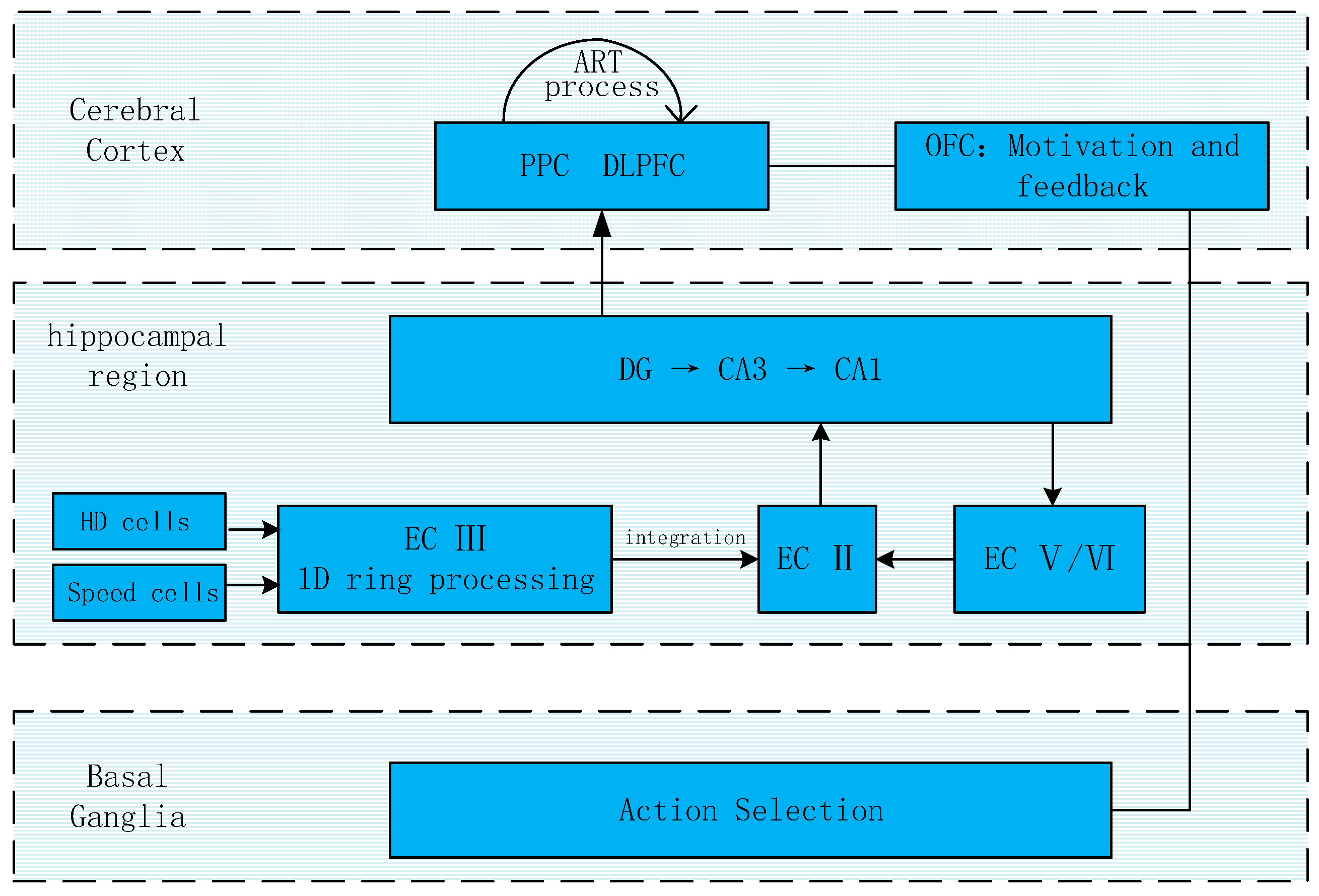
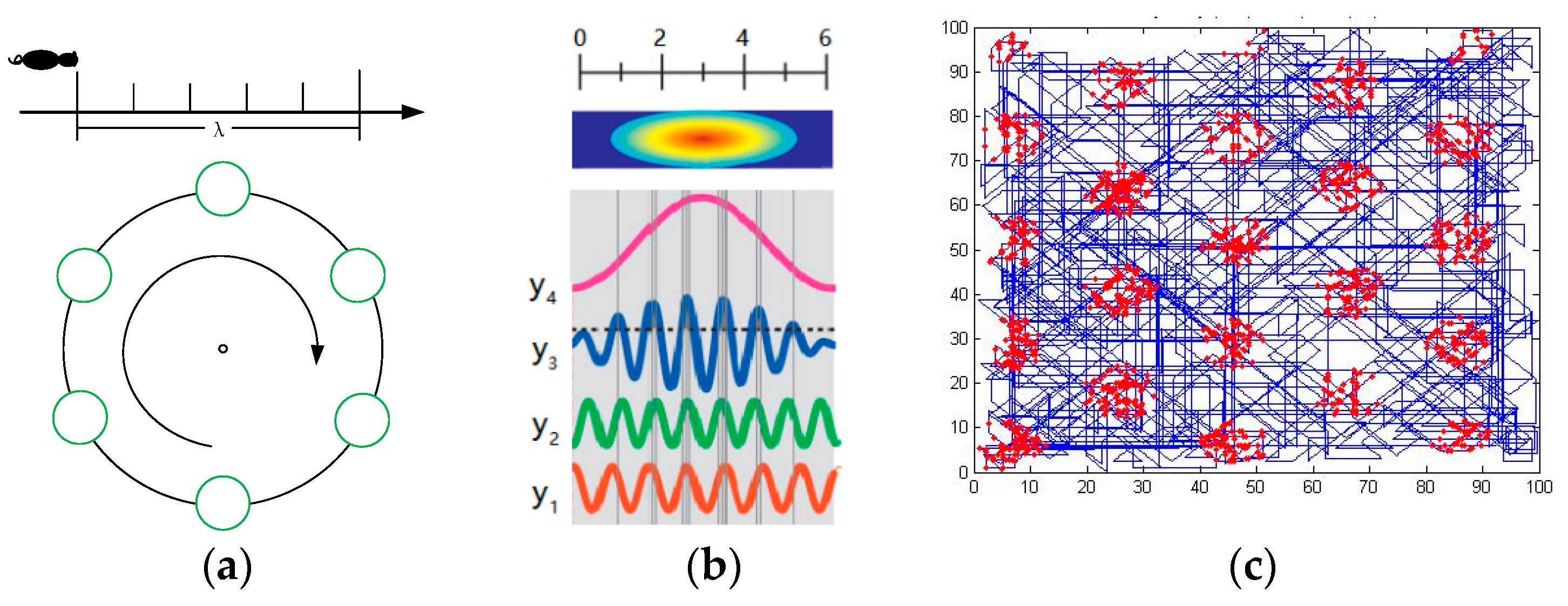
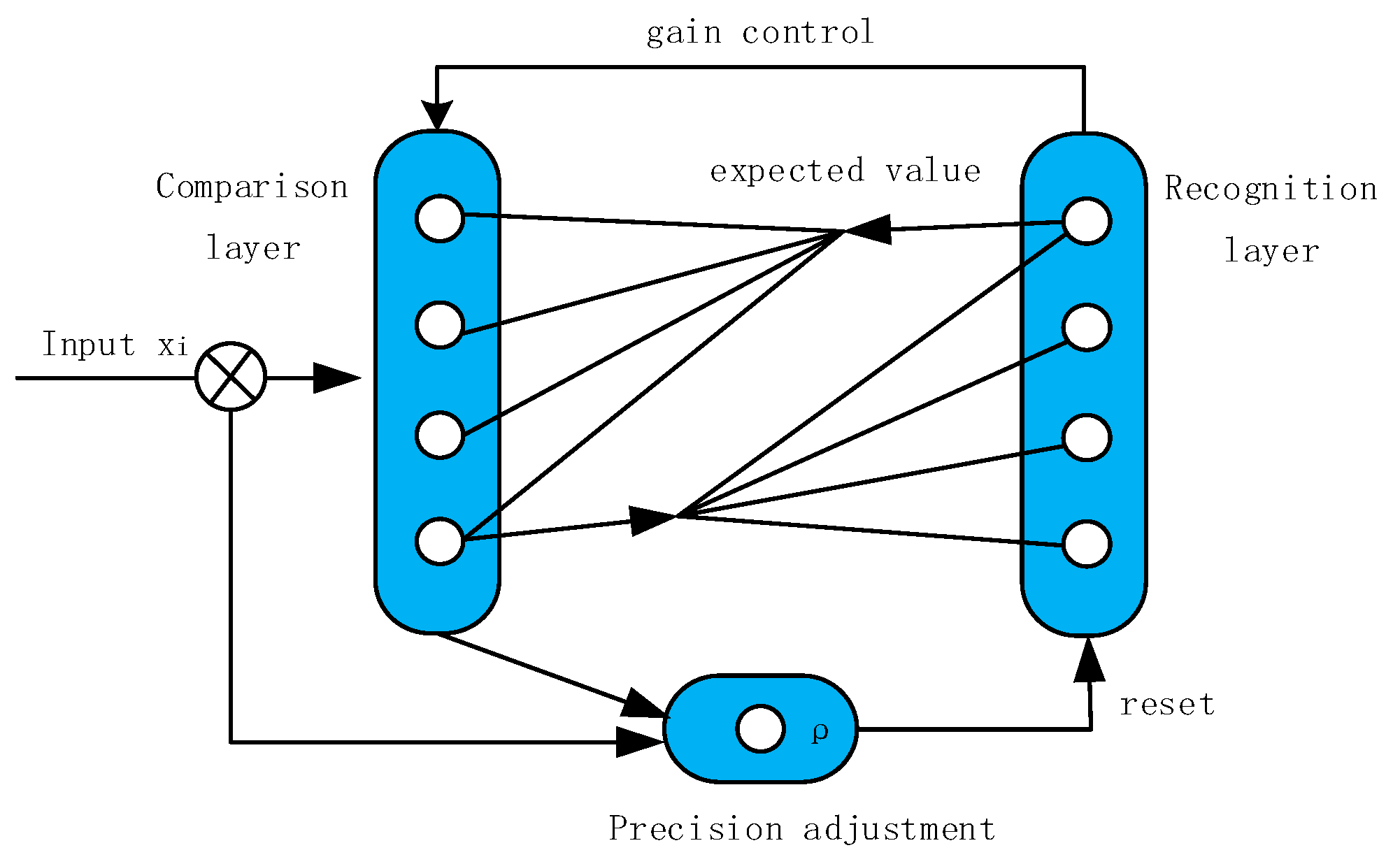
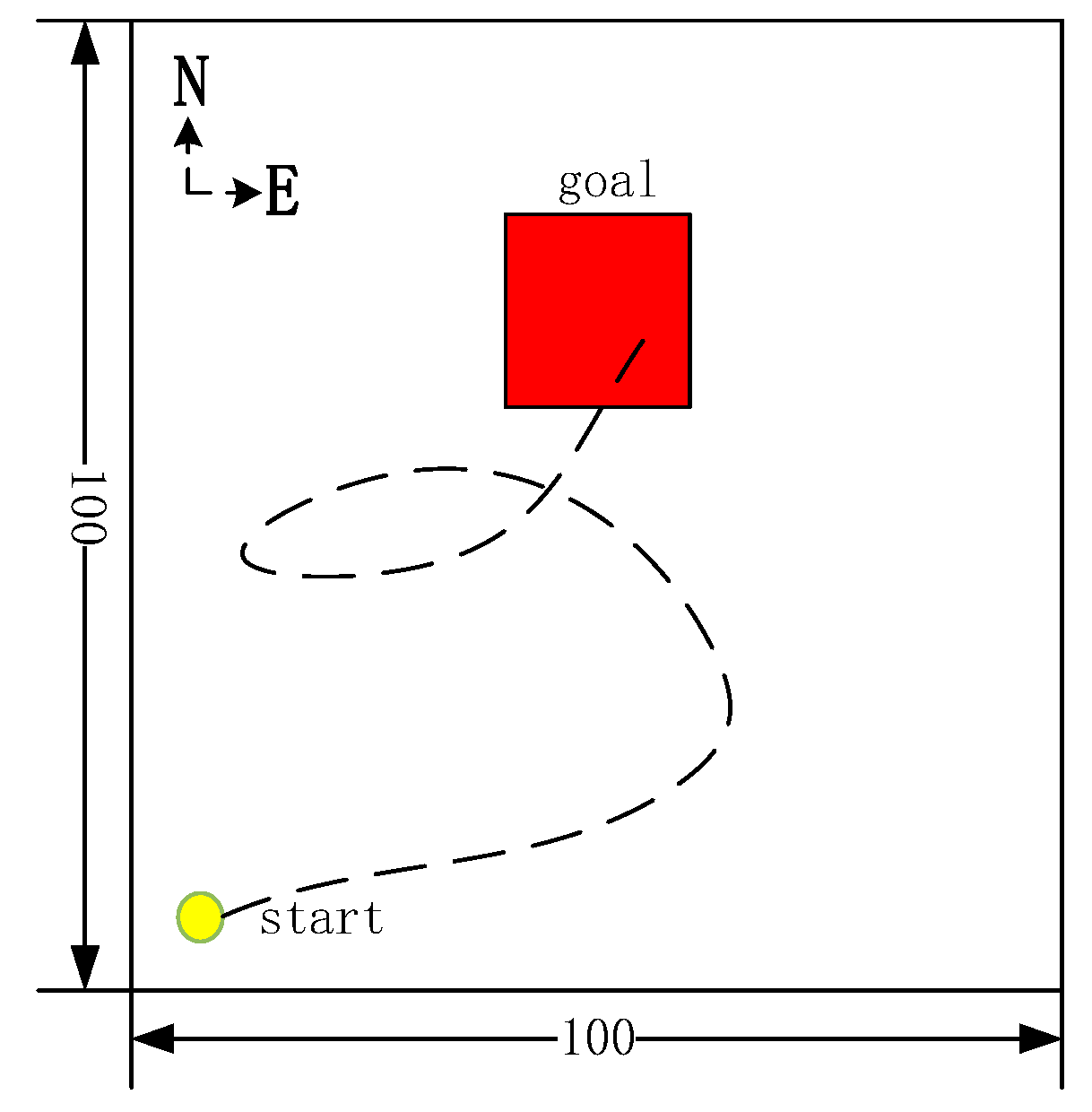
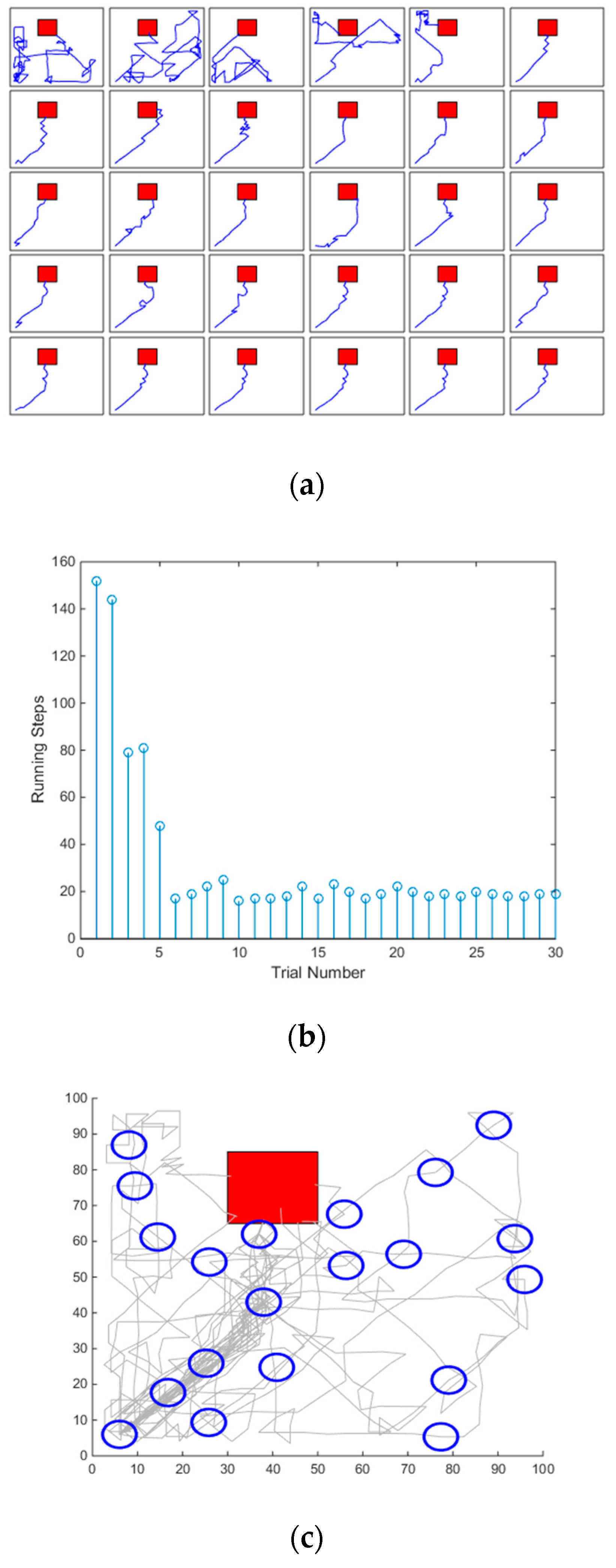
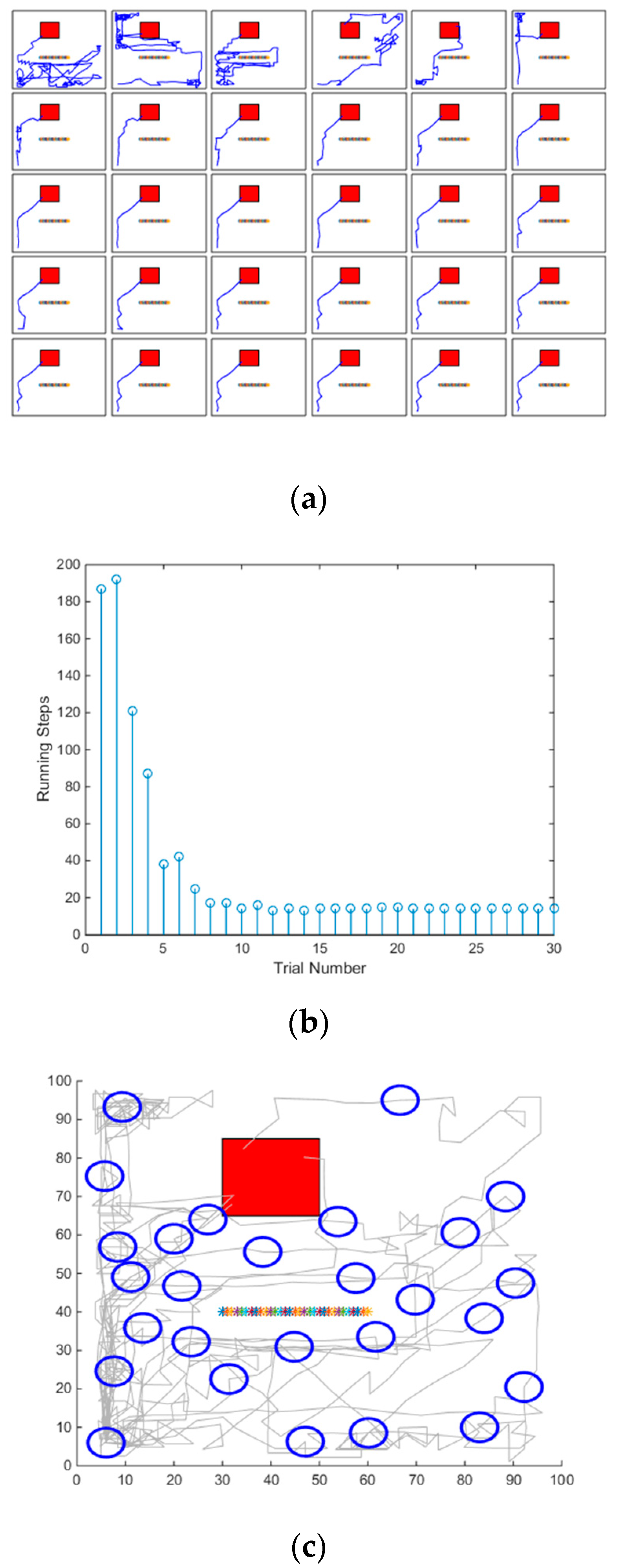
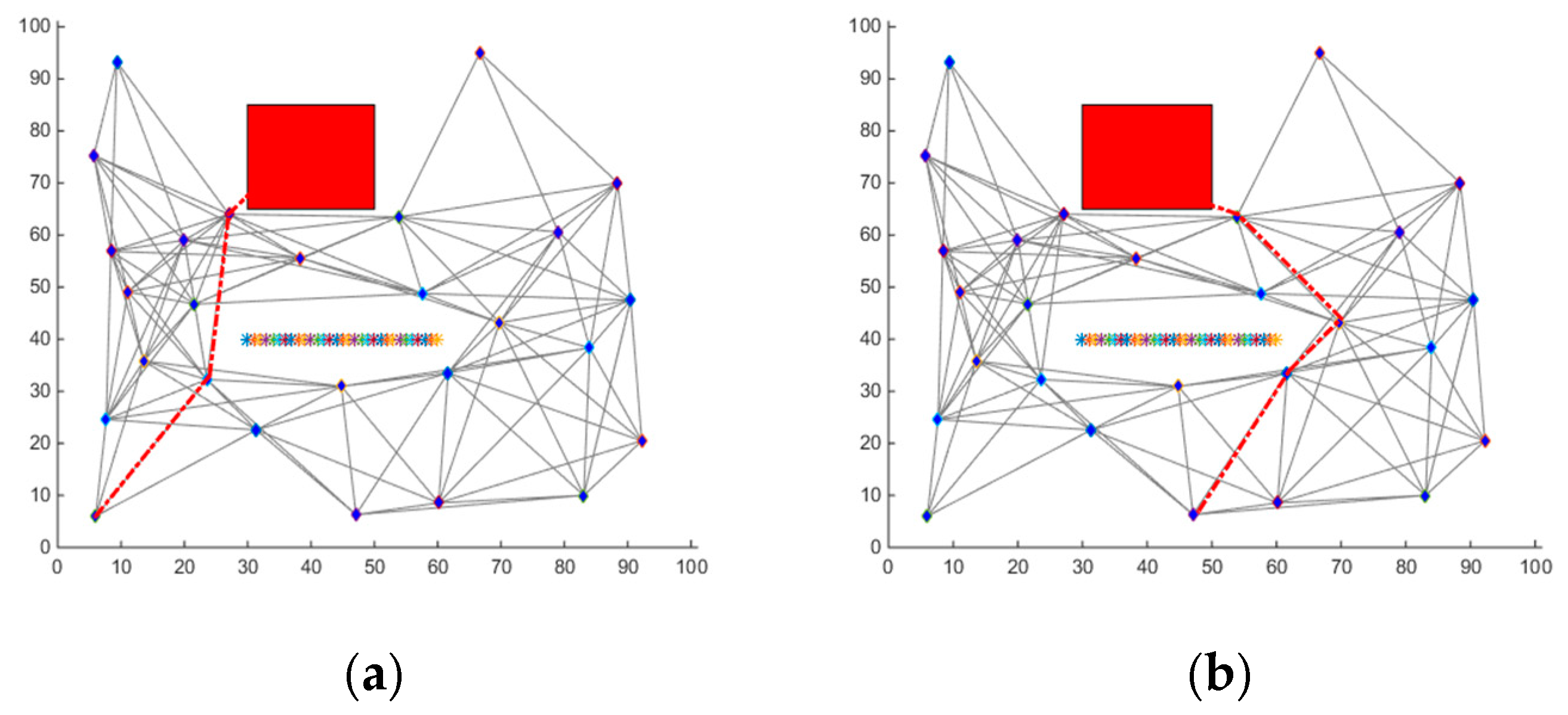
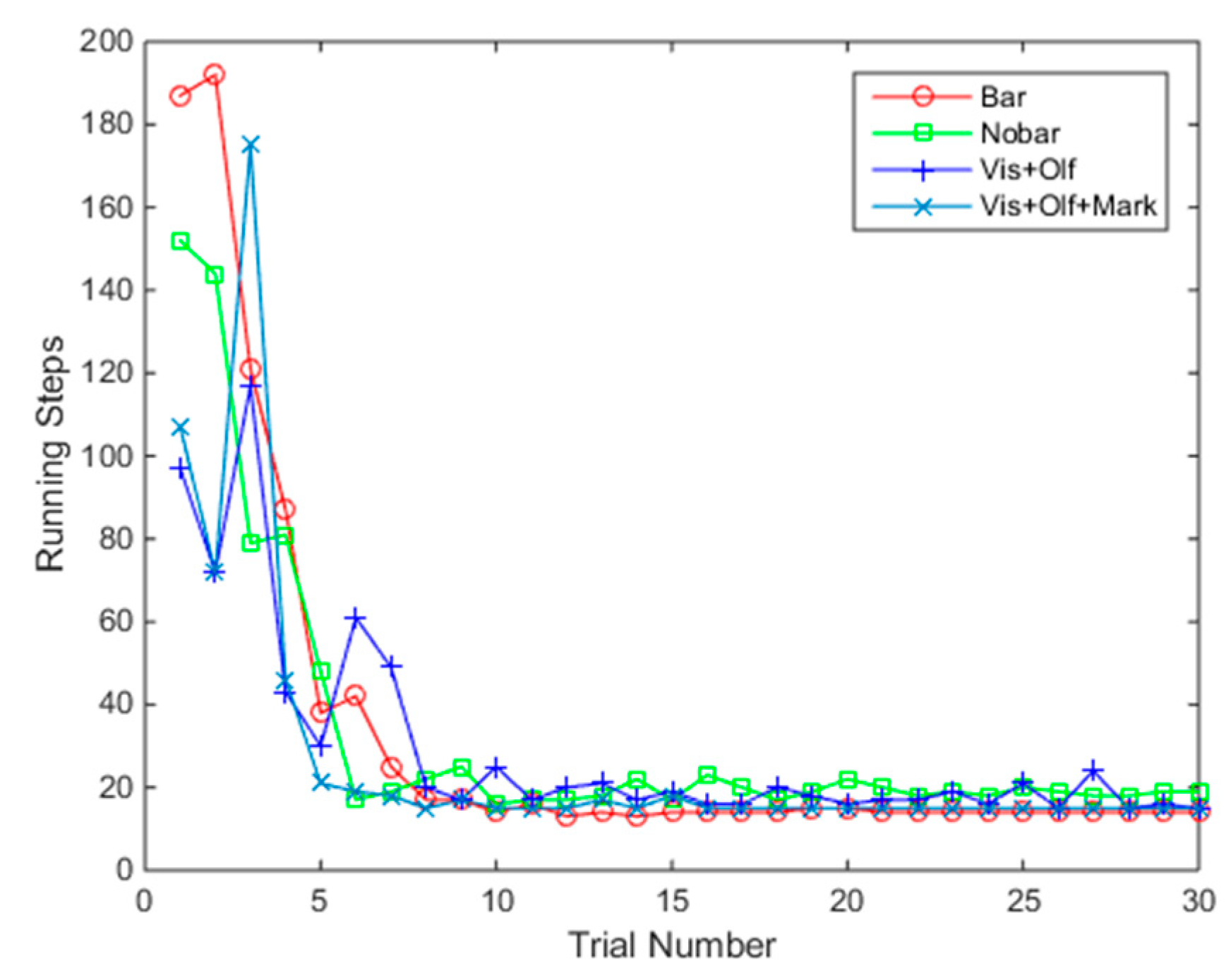
| Parameter | α | β | λ | ξ | h | Δr | ρ |
|---|---|---|---|---|---|---|---|
| Value | 0.7 | 0.7 | 20 cm | 0.1 | 0.5 | 0.005 | 12 |
© 2019 by the authors. Licensee MDPI, Basel, Switzerland. This article is an open access article distributed under the terms and conditions of the Creative Commons Attribution (CC BY) license (http://creativecommons.org/licenses/by/4.0/).
Share and Cite
Chen, Q.; Mo, H. A Brain-Inspired Goal-Oriented Robot Navigation System. Appl. Sci. 2019, 9, 4869. https://doi.org/10.3390/app9224869
Chen Q, Mo H. A Brain-Inspired Goal-Oriented Robot Navigation System. Applied Sciences. 2019; 9(22):4869. https://doi.org/10.3390/app9224869
Chicago/Turabian StyleChen, Qiuying, and Hongwei Mo. 2019. "A Brain-Inspired Goal-Oriented Robot Navigation System" Applied Sciences 9, no. 22: 4869. https://doi.org/10.3390/app9224869
APA StyleChen, Q., & Mo, H. (2019). A Brain-Inspired Goal-Oriented Robot Navigation System. Applied Sciences, 9(22), 4869. https://doi.org/10.3390/app9224869





